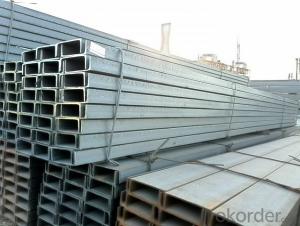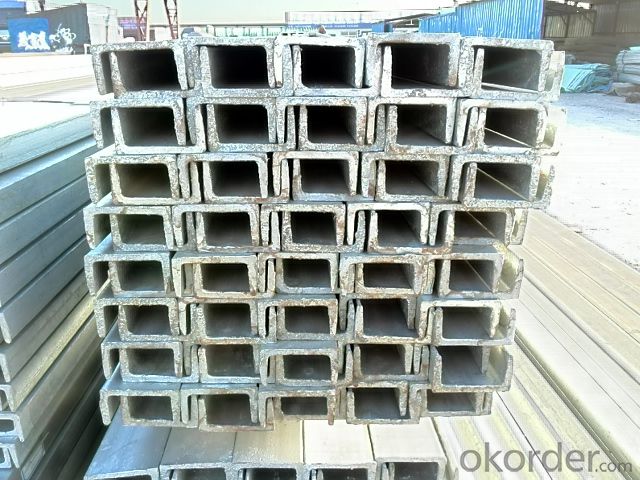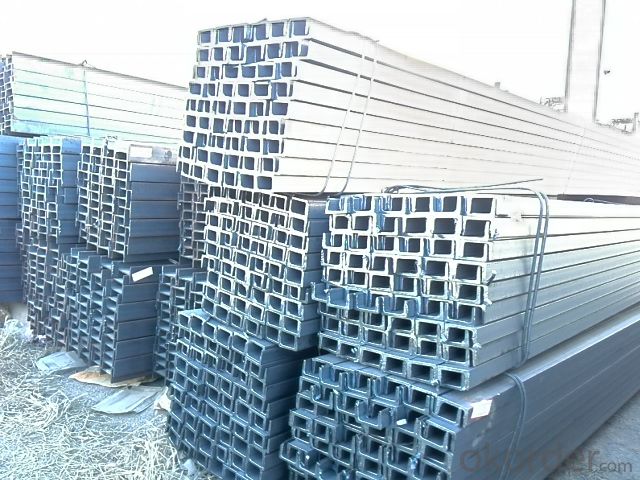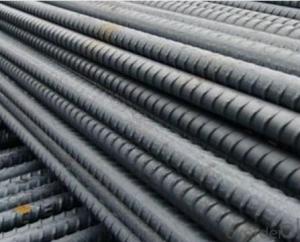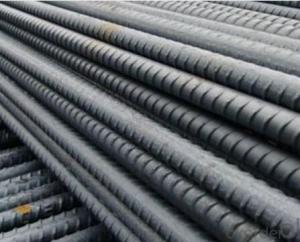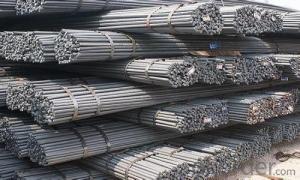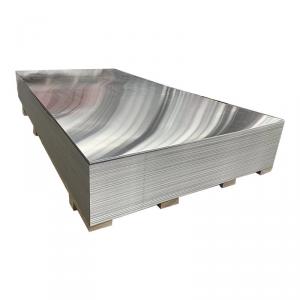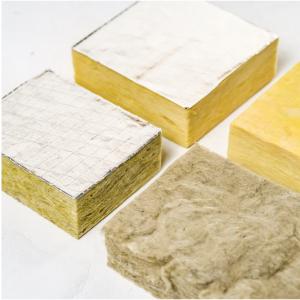Rebar At Home Depot - JIS Standard U-Channels with Best Quality
- Loading Port:
- Tianjin
- Payment Terms:
- TT OR LC
- Min Order Qty:
- 25 m.t.
- Supply Capability:
- 10000 m.t./month
OKorder Service Pledge
OKorder Financial Service
You Might Also Like
Product Description:
| Minimum Order Quantity: | 25MT | Unit: | m.t. | Loading Port: | Xingang Port |
| Supply Ability: | 120000TON/Year | Payment Terms: | TT or LC |
Product Applications:
JIS Standard U-channels are ideal for structural applications and are widely used in the construction of buildings and bridges, and the manufacturing, petrochemical, and transportation industries.
Product Advantages:
OKorder's JIS Standard U-channels are durable, strong, and resist corrosion.
Main Product Features:
· Premium quality
· Prompt delivery & seaworthy packing (30 days after receiving deposit)
· Corrosion resistance
· Can be recycled and reused
· Mill test certification
· Professional Service
· Competitive pricing
Product Specifications:
Manufacture: Hot rolled
Grade: Q195 – 235
Certificates: ISO, SGS, BV, CIQ
Length: 6m – 12m, as per customer request
Packaging: Export packing, nude packing, bundled
1. We are definitely speciallizing in manufacturing and supplying channel steel as per japanese standard, which is characterised with high mechanical strength and competitive prices.
Original Place | Tangshan, China | Brand Name | UINDA |
Standard | JIS G3192 : 1990 | ||
Material Grade | SS490 | ||
Sizes | 50mm to 200mm | ||
Sales Volume/Year | 3000MT | ||
Destination Area | Middle East, Africa, Southeast Asia | ||
2. The sections in details are as followings in the table-1
JIS U CHANNEL | Standard | Sectional | Dimension |
| Mass: |
| (mm) | (mm) | (mm) | (mm) |
|
50x25 | 50 | 25 | 3.0 | 6.00 | 2.37 |
75X40 | 75 | 40 | 3.8 | 7.00 | 5.30 |
75X40 | 75 | 40 | 4.0 | 7.00 | 5.60 |
75X40 | 75 | 40 | 4.5 | 7.00 | 5.85 |
75X40 | 75 | 40 | 5.0 | 7.00 | 6.92 |
|
|
|
|
|
|
100X50 | 100 | 50 | 3.8 | 6.00 | 7.30 |
100X50 | 100 | 50 | 4.2 | 6.00 | 8.03 |
100X50 | 100 | 50 | 4.5 | 7.50 | 8.97 |
100X50 | 100 | 50 | 5.0 | 7.50 | 9.36 |
|
|
|
|
|
|
125X65 | 125 | 65 | 5.2 | 6.80 | 11.66 |
125X65 | 125 | 65 | 5.3 | 6.80 | 12.17 |
125X65 | 125 | 65 | 5.5 | 8.00 | 12.91 |
125X65 | 125 | 65 | 6.0 | 8.00 | 13.40 |
|
|
|
|
|
|
150x75 | 150 | 75 | 5.5 | 7.30 | 14.66 |
150x75 | 150 | 75 | 5.7 | 10.00 | 16.71 |
150x75 | 150 | 75 | 6.0 | 10.00 | 17.90 |
150x75 | 150 | 75 | 6.5 | 10.00 | 18.60 |
150x75 | 150 | 75 | 6.5 | 10.00 | 24.00 |
|
|
|
|
|
|
200X80 | 200 | 80 | 7.5 | 11.00 | 24.60 |
Table-1
3. The mechanical property of JIS U Channel Steel in the table-2:
Grade | Yield Strength,N/mm² | Extension Strength N/mm² | |||
Thickness of Steel,mm | |||||
≦16 | >16-≦40 | >40-≦100 | >100 | ||
SS490 | ≧285 | ≧275 | ≧255 | ≧245 | 490-610 |
Table-2
4. The chemical composition of JIS U Channel Steel as per SS490 in the table-3
Grade | Element(%) | |||
C | Mn | P | S | |
SS490 | - | - | ≦0.050 | ≦0.050 |
Table-3
FAQ:
Q1: Why buy Materials & Equipment from OKorder.com?
A1: All products offered by OKorder.com are carefully selected from China's most reliable manufacturing enterprises. Through its ISO certifications, OKorder.com adheres to the highest standards and a commitment to supply chain safety and customer satisfaction.
Q2: What makes stainless steel stainless?
A2: Stainless steel must contain at least 10.5 % chromium. It is this element that reacts with the oxygen in the air to form a complex chrome-oxide surface layer that is invisible but strong enough to prevent further oxygen from "staining" (rusting) the surface. Higher levels of chromium and the addition of other alloying elements such as nickel and molybdenum enhance this surface layer and improve the corrosion resistance of the stainless material.
Q3: Can stainless steel rust?
A3: Stainless does not "rust" as you think of regular steel rusting with a red oxide on the surface that flakes off. If you see red rust it is probably due to some iron particles that have contaminated the surface of the stainless steel and it is these iron particles that are rusting. Look at the source of the rusting and see if you can remove it from the surface.
Images:
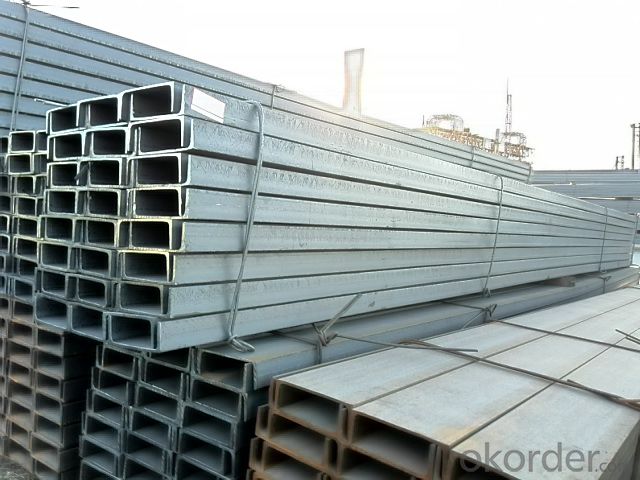
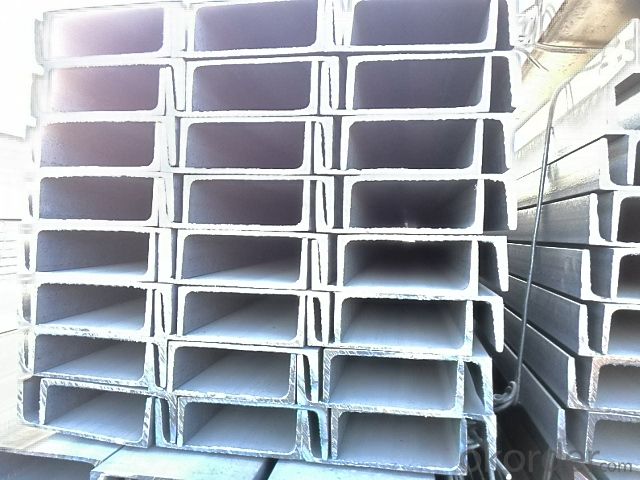
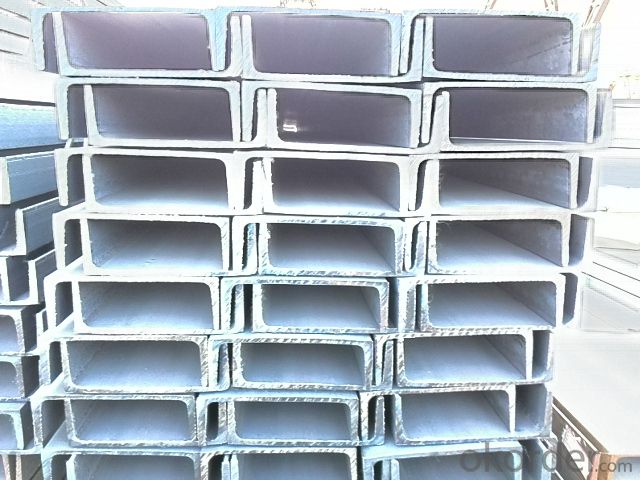
- Q:Are steel rebars suitable for use in structures with high vibration levels?
- Steel rebars are commonly used in structures with high vibration levels. The strength and durability of steel rebars make them suitable for such applications. When structures are subjected to high vibration levels, the rebars help to provide stability and prevent any potential damage or failure. Steel rebars have excellent tensile strength, which enables them to withstand the dynamic forces generated by vibration. Additionally, steel rebars have good ductility, allowing them to absorb and dissipate energy during vibrations, thereby reducing the risk of structural damage. Proper design and installation techniques, including the use of appropriate reinforcement detailing, can further enhance the performance of steel rebars in structures with high vibration levels. Overall, steel rebars are a reliable choice for ensuring the structural integrity and safety of buildings and infrastructure exposed to significant vibrations.
- Q:How are steel rebars different from steel mesh?
- Steel rebars and steel mesh are both made from steel, but they differ in their shape and purpose. Steel rebars are long, cylindrical bars with ridges or deformations along their surface, designed to provide strength and reinforcement to concrete structures. They are typically used in construction projects to increase the tensile strength of concrete and prevent cracking or collapsing. On the other hand, steel mesh consists of interconnected wires that form a grid-like pattern. It is primarily used as a reinforcing material in areas that require a large amount of coverage, such as slabs, walls, or foundations. Steel mesh provides structural support and helps distribute load evenly, reinforcing the concrete against potential stresses. In summary, while both steel rebars and steel mesh serve the purpose of reinforcing concrete, they differ in shape and application.
- Q:Can steel rebars be used in historical bridge restoration?
- Yes, steel rebars can be used in historical bridge restoration. In many cases, historical bridges may have deteriorated or suffered damage over time, and steel rebars can provide strength and stability during the restoration process. Steel rebars are commonly used in reinforced concrete structures and can help reinforce the bridge's structural integrity. However, it is important to consider the aesthetics of the historical bridge and ensure that the use of steel rebars does not compromise its historical value or appearance. Preservation guidelines and consultations with historical experts can help determine the appropriate use of steel rebars in historical bridge restoration projects.
- Q:Can steel rebars be used in road or highway construction?
- Yes, steel rebars can be used in road or highway construction. Steel rebars, also known as reinforcing bars, are commonly used in the construction industry to provide additional strength and support to concrete structures. In road and highway construction, rebars are typically used in the construction of reinforced concrete pavements, bridge decks, and retaining walls. Rebars are embedded in concrete to enhance its tensile strength, as concrete is strong in compression but weak in tension. By adding rebars to the concrete, it helps distribute the tensile forces and improves the overall durability and load-bearing capacity of the road or highway infrastructure. The use of steel rebars in road or highway construction offers several advantages. Firstly, it improves the structural integrity and longevity of the infrastructure, as reinforced concrete structures are better able to withstand heavy traffic loads, temperature changes, and environmental factors. Secondly, rebars help prevent cracking and deterioration of the concrete, reducing the need for frequent repairs and maintenance. Additionally, the use of rebars allows for more efficient and cost-effective construction, as it enables the use of thinner concrete sections without compromising strength. Overall, steel rebars are a crucial component in road or highway construction, as they provide the necessary reinforcement to ensure the strength, durability, and longevity of the infrastructure.
- Q:What are the guidelines for proper spacing and lapping of steel rebars in concrete structures?
- The guidelines for proper spacing and lapping of steel rebars in concrete structures vary depending on the specific design and structural requirements. However, some general recommendations exist. The rebars should be adequately spaced to ensure proper concrete cover, allowing for corrosion protection and sufficient bond strength. Typically, the minimum spacing between parallel rebars is around 1.5 times the diameter of the larger bar or 25 mm (1 inch), whichever is greater. Lapping, or overlapping, of rebars is necessary to create a continuous load path. The length of the overlap depends on the design and the type of rebar connection being used. It is important to follow the specifications provided by structural engineers and adhere to local building codes to ensure the proper spacing and lapping of rebars in concrete structures.
- Q:What are the different sizes of steel rebars available in the market?
- The market offers a variety of steel rebar sizes to cater to the specific needs and requirements of construction projects. Typically, steel rebars are available in a range of diameters, which commonly span from 6mm to 40mm. The designated sizes are determined by the nominal diameter of the rebar. Among the steel rebars available in the market, the most frequently utilized sizes are 6mm, 8mm, 10mm, 12mm, 16mm, 20mm, 25mm, 32mm, and 40mm. These sizes are extensively employed in various construction applications and can easily be found in most hardware stores. The selection of the rebar size is reliant on the structural design, the required load-bearing capacity, and the specific construction project. Smaller diameter rebars, such as 6mm or 8mm, are commonly employed in light construction projects or instances where a lesser load-bearing capacity is necessary. Conversely, larger diameter rebars, such as 25mm or 32mm, are often used in heavy-duty construction projects or structures that demand higher load-bearing capacity. To determine the appropriate rebar size for a particular project, it is crucial to consult with structural engineers or construction professionals. They can offer guidance based on the design requirements and structural calculations.
- Q:What are the different grades of epoxy-coated steel rebars?
- The different grades of epoxy-coated steel rebars are typically classified based on their yield strength, which can range from Grade 40 to Grade 80. These grades signify the minimum yield strength in ksi (thousand pounds per square inch) that the rebar can withstand before it deforms.
- Q:What are the different types of coating available for steel rebars?
- There are several different types of coatings available for steel rebars, each with its own unique properties and benefits. Some of the most common types of coatings include: 1. Epoxy Coating: Epoxy coating provides excellent corrosion resistance and is commonly used in environments where steel rebars are exposed to moisture or harsh chemicals. It forms a protective barrier that prevents corrosion and extends the lifespan of the rebars. 2. Zinc Coating: Zinc coating, also known as galvanization, is one of the most widely used coatings for steel rebars. It provides excellent corrosion resistance and acts as a sacrificial layer, meaning it corrodes before the steel rebars do. This sacrificial protection helps to prevent rust and extend the life of the rebars. 3. Polyethylene Coating: Polyethylene coating is a type of thermoplastic coating that is commonly used for steel rebars in applications where electrical insulation is required. It provides excellent resistance to moisture, chemicals, and abrasion, making it suitable for use in a variety of environments. 4. Fusion-Bonded Epoxy Coating: Fusion-bonded epoxy coating is a type of coating that is applied to the rebars through a process of heat and pressure. It provides excellent adhesion and corrosion resistance, making it ideal for use in harsh environments such as marine or industrial applications. 5. Powder Coating: Powder coating is a dry finishing process that involves applying a fine powder to the rebars and then curing it in an oven. It provides a durable and protective coating that is resistant to corrosion, chemicals, and UV radiation. Powder coating is available in a wide range of colors, making it a popular choice for decorative applications. These are just a few examples of the different types of coatings available for steel rebars. The choice of coating will depend on the specific requirements of the project, such as the environmental conditions, expected lifespan, and desired performance characteristics.
- Q:How do steel rebars affect the flexibility of a concrete structure?
- Steel rebars enhance the flexibility of a concrete structure by providing tensile strength. This reinforcement prevents cracking and increases the overall durability and load-bearing capacity of the structure.
- Q:What are the common grades of steel rebars?
- The common grades of steel rebars are typically categorized by their yield strength, which is the amount of force required to deform or bend the steel. The most common grades of steel rebars include Grade 40, Grade 60, and Grade 75. Grade 40 steel rebars have a minimum yield strength of 40,000 pounds per square inch (psi) and are commonly used in general construction projects where moderate strength is required. Grade 60 steel rebars have a minimum yield strength of 60,000 psi and are widely used in reinforced concrete structures such as bridges, buildings, and highways. They offer higher strength and durability compared to Grade 40 rebars, making them suitable for heavy-duty applications. Grade 75 steel rebars have a minimum yield strength of 75,000 psi and are commonly used in high-rise buildings, dams, and other structures that require exceptional strength and load-bearing capacity. These rebars provide the highest level of strength and are specifically designed for structures exposed to extreme conditions or heavy loads. It is important to note that the specific grade of steel rebars required for a particular project is determined by structural engineers and is based on factors such as the expected loads, environmental conditions, and design specifications.
1. Manufacturer Overview |
|
|---|---|
| Location | |
| Year Established | |
| Annual Output Value | |
| Main Markets | |
| Company Certifications | |
2. Manufacturer Certificates |
|
|---|---|
| a) Certification Name | |
| Range | |
| Reference | |
| Validity Period | |
3. Manufacturer Capability |
|
|---|---|
| a)Trade Capacity | |
| Nearest Port | |
| Export Percentage | |
| No.of Employees in Trade Department | |
| Language Spoken: | |
| b)Factory Information | |
| Factory Size: | |
| No. of Production Lines | |
| Contract Manufacturing | |
| Product Price Range | |
Send your message to us
Rebar At Home Depot - JIS Standard U-Channels with Best Quality
- Loading Port:
- Tianjin
- Payment Terms:
- TT OR LC
- Min Order Qty:
- 25 m.t.
- Supply Capability:
- 10000 m.t./month
OKorder Service Pledge
OKorder Financial Service
Similar products
New products
Hot products
Hot Searches
Related keywords
